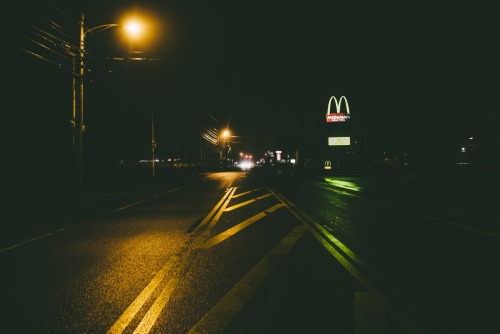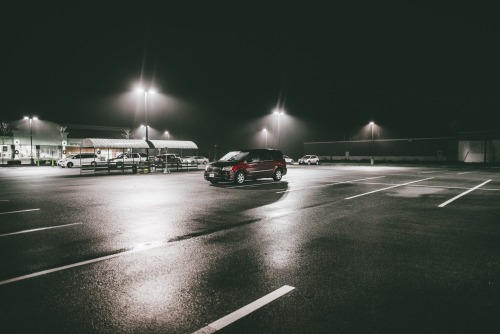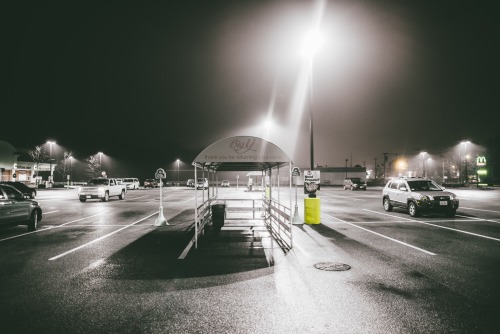#small town life
Where no one knows your name
How many times is a person meant to make new friends?
When I moved into an apartment in DC with an absolutely iconic girl from Craigslist, I wrote in my journal, “you never know when you’ll meet your next bridesmaid.” Charmingly juvenile, as I was 24 years old. Ironic, as I never had any bridesmaids. And embarrassing, knowing I wrote something that’s surely been embroidered on a bachelorette party t-shirt by now.
My point was: you can meet people you fall in love with anywhere, anytime, assuming your heart (and calendar) are open.
Now my heart and calendar are open and I am one of Elizabeth Bennet’s sad sisters, cloying and desperate for attention while everyone at the ball ignores me.
Meeting people here is unnerving and hapless and eye-clawingly vulnerable. My first new friend told me she was moving away in a few months. Do you invest deeply in hopes of another faraway friendship? Do you just go back to waving as you pass on the street? I like this girl! What an embarrassing thing to have to say to someone! Do you just invite people to every and anything like a lunatic? I can’t even remember to call the people I am forever-and-ever in cahoots with.
I’m also deeply bound by what I’ll call the Movie Trap: say it’s 3pm during not-a-pandemic, and you get the urge to see a movie. You look at the showings, and there’s one you really want to see at 7:15. You think to yourself, “I should make an effort,” and you text a friend.
“Hey, you wanna go see This Cool Movie at 7:15 tonight?”
No one ever says yes. Don’t give me an example of when someone has, because it’s always one of these answers:
- “Oooh, I’m actually seeing it with Kate tomorrow - wanna come?”
- “Can we go to the 9pm showing? Stuck at work.”
- “Yeah but let’s see Movie You’ll Fucking Hate instead.”
Now maybe I’m just lighting flares guiding you to the worst parts of my personality, but this drives me nuts. No, Liz, I don’t want to go tomorrow. I want to go tonight. At 7:15. So I can be in bed by 10. And you’d have to drag my dead body and prop open my eyes to get me to see something like Marriage Story in theaters.
The Movie Trap is a big reason I usually hang out by myself, or I make plans weeks in advance. (Don’t I sound like a blast.) Just the idea of being like, “I like you! Wanna hang out in October?” makes me want to collapse into a puddle of sad adulthood. Which is why on Friday at 4:30pm, when a girl I’d met a week prior asked if I wanted to grab a drink, I just said yes. I put on a pretty dress, did my makeup, put stuff in a purse, and drove the 25 minutes to town.
It was really fun! And how novel to have new contacts in my phone like “Maggie blue house” and “Jess concert friend” — a throwback to the days of “Greg guy on L train” and “Devon ad party.” The very concept of not knowing someone’s last name or even needing it, and a year from now updating their contact info and smiling at your origin story.
But for the most part, no one is in our phones. In terms of phone numbers collected, here is the list:
- Two friends we knew prior who thank god you guys exist.
- New friend who is moving away.
- New friend who is game to drink tequila and ride mountain bikes.
- Neighbor-not-yet-friend who I really fucking like and am not sure how to cross hang-out threshold with.
Not to say there aren’t any other prospects or people I’m platonically gaga over, but I don’t have their phone numbers. There are honestly a lot of people like this because when you live in a small town (and you’re from the Midwest) you say “oop, sorry” to every person/object you bump into, and you say “hi :)” to every person you see. These are the rules. If I drive by you and don’t wave, it’s because I was so deep in a daydream I probably shouldn’t have been driving in the first place. This isn’t acceptable, because in our urgency to tattoo our vaccination status on our foreheads so we can make friends, it turns out just driving by someone can be a viable strategy.
A few days ago, a man was driving by our kitchen window and then our driveway, and then he reversed back up to the kitchen window and started waving.
Ben went outside — it was that kind of wave. The man had seen from his car a smokejumper emblem on the back of a truck in our driveway.
“Hey, are you a smokejumper?”
We aren’t. But my dad was, and he was in town visiting, accompanied by the emblem on the back of his truck. The guy said we should drink sometime. Numbers were not exchanged. We’ll call that a node, because it’s not quite a connection. And it’s mainly nodes, waiting to be connected, to have relevance.
But first, no matter who you’re trying to befriend, you have to answer everyone else’s Do I Care Quiz. The quiz is employed by 93% of locals to determine how they feel about you existing within their personal 50-mile radius. The first question is non negotiable:
1) Are you visiting?
Variations on this question include “how long are you in town?” or “what brings y’all to town?” or my least favorite and most insulting, “did you just finish Jeeping?” I know I have blonde hair and say y’all, but how dare you. (Also, to be clear, you can own a Jeep, customize your Jeep, mod out your Jeep, and love your Jeep, but you’re not Jeeping until you drive too fast through a tiny town so you can hurl your Jeep over a mountain pass without ever getting out of it.)
So the answer to “are you visiting” is “no, I live here.” Which brings us to the next question, my favorite for how loaded the gun, kneeling in the grass, scope on, target locked it is.
2) Are you part-time or full-time?
The first time I answered this question, I didn’t realize it was essentially like asking how someone voted in the 2020 election. The judgment was cocked and ready and the palpable relief/joy/or at the very least, tolerance, exuded by answering “full-time” was like when the sun comes out from behind the clouds on a 40 degree day. I was fine, but wow that does feel better.
The third question though does not have a standard hoped-for answer. This is where nodes turn to connections turn to phone numbers.
3) What brings you here?
It seems like the best possible answer would be saying you work in town, and you’re going to begin construction on displaced-worker housing to ensure the people who run this town can actually live in it. We’d have everyone’s phone number. Saying you’re a writer who works remotely and bought a house from a legendary and beloved local who could no longer afford it is really something you keep to yourself.
But in the interest of making friends, I just word vomit my entire history. We might as well find out at the onset if I make your eyes roll back into your skull. Not at all threatening that all it takes is a single social signal misinterpreted to be the absolute death knell of my ability to make friends in a town of some 1400 adults.
In fact, I’ll share one such interaction. I was hiking with Cooper, about 5 miles by foot away from my house. I was on a trail, crossing a sloped meadow, and a group was traversing up the hillside to the trail. I said hi, where y’all coming from. One girl answered and we talked about the trail. She eyed me up and down.
“Did you just move here?”
“I did!”
“I served your family last week,” she said.
“Oh,” that phrasing. “Must have been my in-laws.”
“Heard you bought Jack’s house. Such a bummer when locals like that are forced out.”
“We didn’t even know about his house,” I said. “We were looking at another house and he asked his realtor if he could get us to come see his house. We just loved it, and him!” She had no emotional reaction to this.
“You moved from California?” she asked. (Dangerous question.)
“Yeah, got these sea level lungs, haha,” attempting to disarm with humor was a failure, “but couldn’t be happier to be out of California.”
“It’s not like this all year. Winter’s really hard here, you’re in for a rude awakening.”
“Well California’s the last place I lived, but I’m not from there. I’ve lived in brutal winters. At least Colorado gets sun!” I laugh with cloaked loathing.
“It’s different when you live at altitude,” she said, like no human aside from her had ever been literally anywhere. “Are you trying to go around?” She indicated the path behind her.
“No, y’all go ahead, just gonna wait to give you your space. I’m sure you’re faster than me.”
“K, good luck making it to the lake.“
Maybe she was thirsty. Maybe she was hungover. Maybe she just has vicious delivery, but it felt like every blade of grass was leaning against the wind to listen. She was with four other people and not one of them said a word. I left that interaction not wanting to see another human ever again.
But that interaction, and her intimate knowledge of exactly which house I lived in, made me want to decorate like we lived in a gingerbread house, all candy canes and plum drops, screaming to any passerby that we’re friendly. One of the mayor’s first questions to me was “what are you going to do to the house?” There are rules here about what your house can look like, and I kept emphasizing we bought the house because weloved it, not because we wanted to change everything about it. And now, instead of wanting to decorate the interior, I want to put up shades so we don’t contribute to light pollution, I want to hang a sign by the water spigot saying “grab some if you need” for hikers and mountain bikers, I want to paint a sign for the wild mint by our door that says, “I mint to tell you to take some,” because our neighbors were openly panicked they wouldn’t be able to just grab mint from the cabin’s garden anymore.
Without question, COVID makes things harder. Dinner parties feel like dares. Dropping cookies off at someone’s house feels invasive. Grabbing a drink feels like the ultimate sign of trust. But at least we have nodes who can connect who can think to invite us and who can see that despite having lived in California, we’re not all that bad.
In the meantime, I’ll be painting signs about water and mint, hoping to garner the benefit of the doubt from the so beautifully, earnestly, and waiting-to-see-if-you’re-worth-it doubtful.
Subscribe to the newsletter at tinyletter.com/keltonwrites — high altitude relocation and renovation in a tiny mountain town.
I’m not sure if that’s a good thing
“Well you’re definitely the first.”
This past week, we screened-in the eastern facing porch on the side of the cabin. The porch slopes to the South, with the brick-on-dirt floor crumbling in that direction as well until it reaches uneven slabs of stone acting as steps down to the “yard” below. A mixed material retaining wall wraps beneath the steps to the south facing garage, holding up one corner of the narrow deck on the front of the house. The deck, in the heat of a high altitude summer, droops off the house like it’s daydreaming about the winter snow’s embrace. It’s safe to sit on, though I would not recommend leaning on the railing.

The side porch takes the brunt of the wind. Our wooden rocking chairs have been rocked some 20 feet into the yard more than once in the two months we lived here. In the myriad of threats we heard about the weather, most people included the wind. We all know how I feel about this ongoing weather intimidation tactic. I asked, “what speed are the gusts?”
“Oh, they get up to 70 miles per hour on some days.”
This was the first quantifiable piece of weather information someone had offered — an actual number we could react to with data and our historical personal experiences of various weather events. And our reaction was: uhhhh…. OK????
Look, I get it. No one’s preaching the skin benefits of -20 degree wind gusts at 70 mph, building snow drifts against your house in the span of minutes that Cooper could die in. I am not going to pretend that’s pleasant. But 70 mph? Any wind I’ve driven faster than does not intimidate me. I used to rally the horses at 12 years old in winds over 70mph to get them in the barn before the latest tornado whipped through. I helped shutter the resort in the BVI as the Category 5 hurricane rolled in. Even in Topanga, 70 mile per hour gusts were not uncommon in Santa Ana events. We had our single pane windows shatter more than once from debris in the wind. We taped cardboard up and went to sleep.
That “70 mph” was all I needed to hear to confirm our next project: we were going to build a catio for these cats, and we were going to do it on the pre-existing porch structure to save time and money.
We spent a week framing out the structure. We had to carve into the logs of the house to embed the wood supports for the framing.
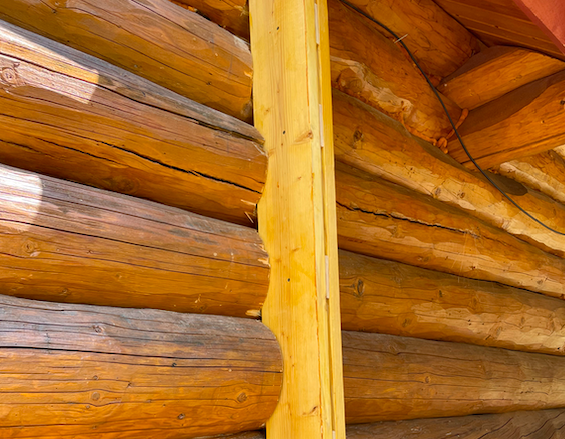
And from there, every piece of wood was custom carved and cut to fit around the existing timber supports. The existing porch was so wildly uneven that there are gaps between each piece of old wood and the new framing. Our plan is to mix all the wood chips from the project with mortar/chinking and stuff the gaps — a good solution for the log cabin look. We built a plywood pony wall up to 28 inches from the interior of the porch, which gives a height of ~4-5ft from the exterior ground below. It’s capped with a 2x6” railing for even the fluffiest of cats to find a perch. The exterior will be wrapped with corrugated metal that we’ll quick-age to match the metal that wraps the bottom of the cabin. On the interior of the porch, we’ll use shiplap to hide the framing.


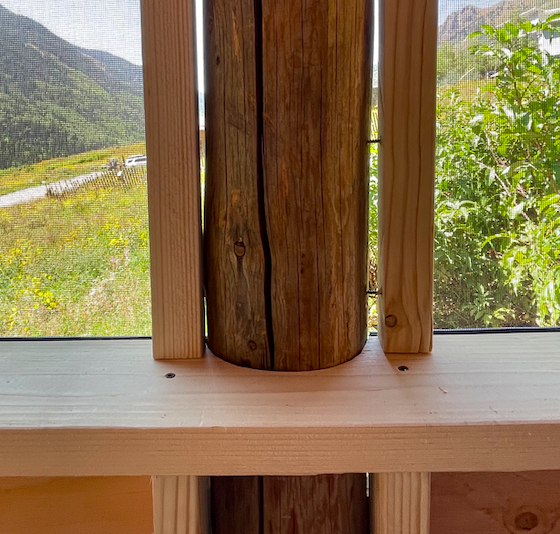
The screens themselves can withstand winds up to 120 mph, but to-be-determined if they can hold the weight of a growing maniac cat who has already tried to climb them. In the event the screens succumb to cat (or wind or snow or neighbor judgment) we’ll reinforce with metal mesh. We’re going to maintain this screen porch regardless of what the screen is.
We had the pleasure of running into one of our more industrious neighbors the other day, and Ben asked him, “hey we’re building a screen porch. Is this a terrible idea?”
He laughed. “Well you’re definitely the first.” But he liked it. Great way to diminish wind into the house. Simple way to regulate the temperature with massive south-facing windows. And indeed a practical outdoor safe haven for cats in predator territory. Just because you’re the first doesn’t mean you’re foolish — just foolhardy. There’s plenty of that here.
This town has the typical mountain town’s truncated version of a colonizers’ history: “established 1881.” But it was plenty established prior to that by the Uncompahgre Band of the Ute Nation, removed by the U.S. Army on September 7, 1881, nearly 140 years ago. The government relocated the Uncompahgre Ute People to Utah, and one year after the Ute were forcibly removed from their ancestral land, San Miguel County split off from Ouray County and was made its own political subdivision in the newly-formed State of Colorado.
In 1879, the ore-laden valley already had 50 people living in it, with a new narrow gauge railway only 2 miles away. By 1885, it was a town of 200 people. There was a hotel, a couple saloons, a pool hall. Winters were treacherous; the valley was and is prone to avalanches. But where there’s gold, there’s gumption. The power needed to run the stamp mill to process ore drove innovation. Timber was scarce at such high elevations, so a wood powered steam mill wouldn’t cut it. But the San Miguel River just a few miles down from the mine looked promising. Thus began the development and construction of the Ames Hydroelectric Generating Plant. It was a hit. In fact, it was so successful that the Ames Plant led to the adoption of alternating currents at Niagara Falls and eventually to being adopted worldwide as a viable power solution.
The plant remains, but the gold rush obviously didn’t. By 1940, the U.S. Census declared this little town I call home as tied for the lowest population in the country: 2 people. By 1960, it was one of four incorporated towns in the U.S. with no residents. But the joke was on the Census — the town’s single resident was just out of town the day the census came through. 1960 population: 1.
By 1980 the population grew to 38, 69 in 1990, and about 180 now. (Plus 51 dogs according to the town’s website.) With modern amenities, it’s easier to be here. Studded snow tires, satellite internet, solar panels, instant coffee. No matter the hardships, there’s the reality of the present. In the 1880s, as the town boomed, the Ouray Times declared, “it will be at no distant day a far more pretentious town than it is now.” That day hasn’t exactly arrived, but I guess it depends on what you consider pretentious. I don’t think the town claims any airs of excellence beyond what’s true. In fact, the town hardly claims anything at all. There’s no sign indicating it’s even here. There’s just the old side and the new side.
The new side, the Eastern half, was drawn out in the early 1990s, some 100 years later, and is separated from the Old Town by an avalanche zone—preserved open space for hiking in the summer, preserved open space for surviving in the winter. The town forbids short-term rentals, no one has a fence, dogs roam free, and all the houses have that cabin look to them. A boulder nests in a grove near a trailhead in the center of town with a plaque paying respect to the Utes who called this valley home. There’s no industry here. No businesses allowed. If you want a $7 latte, you can drive the 14 miles required to get it, assuming there’s not an avalanche blocking your path. You can, however, buy a pink lemonade in a
solo cup at the permanent lemonade stand run by the local feral child mafia. Crystals (rocks) can be purchased for an additional cost. We bought one, hoping to buy favor at the same time.
The town plan has a few guiding principles, and it’s all in the name of preservation. We must preserve:
1 - the quiet atmosphere
2 - the rustic character
3 - the natural setting
And finally:
4 - protect the health and wellbeing of the people here
No snowmobiles, no ATVs, no drones. In fact, the only sign of the outside world here are the passers-through. When you take the dirt road through town to the end, you enter National Forest, and you can hike over the pass saddle at nearly 12,000 feet before descending down the other side into Silverton. The pass road climbs rutted through an aspen forest before scaling across a scree field and then lurching over to the other side. Every day, it seems like 30 or so Texans and Arizonans in lifted and loud Jeeps with unused mods climb over this mountain in the comfort of their air conditioning, simply to drive down the other side. You could hike it, ride it, run it, and ski it, but they don’t. They rev their engines, kicking up dust in a town of feral children and roaming dogs, staring at us instead of waving.
I’ve lived here for two months and look how salty I am. I’ll fit in yet.
But today, there is a temperature that whispers of perfect trails and the dwindling of ogglers driving 35 in a 15. It’s already snowed in the mountains we see from our kitchen. Today, like a dedication to the Septembers of our youth, you can feel a chill in the air. A temperature akin to pencils and sweaters and reinventing yourself. A temperature that doesn’t exactly sing “screen porch” but could if you had the right slippers on. That’s what I did this morning: put my slippers on and sat there in the cool mountain morning air, thinking about the cemetery behind our house, about the Ute tribe, about the miners, about the mailman who died on Christmas in 1875 on the pass, about the 5 people who died in avalanches here just last year, about the people in their cars on their phones driving through, and all the people who’s very first question to us was, “so are you gonna live here part-time or full-time?”
Maybe it will be a hard place to live. But at least we’ll have a screen porch.
Every week I’m writing about moving to log cabin in a small town at 10,000 feet. Subscribe here for free:tinyletter.com/keltonwrites



